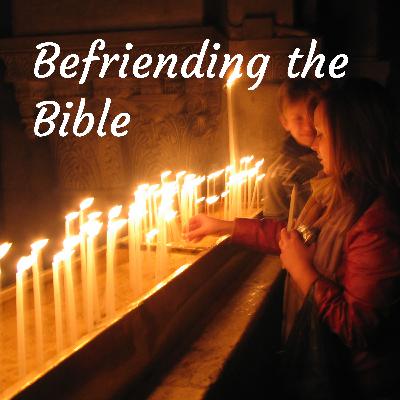Bible Basics 6: The "Canon" of the Two Testaments
Update: 2021-06-10
Description
Here we look at the "Canon" of the First and Second Testaments, that is, how the collection of writings came about, what's been included and later additions to the First Testament written in Greek (called the "Deuterocanonical" or "Apocraphal").
Decision for the First Testament collection ("Tanak") occurred in late first century CE, as reflected in liturgy and teachings. There are 39 books:
The Law (Torah)
The Prophets: (Nebiim), Former and Later Prophets, and Twelve Prophets.
Writings (Kethubim)
Greek OT writings considered "deuterocanonical or apocryphal writings" (included in Catholic and Orthodox traditions): Tobit, Judith, 1&2 Maccabees, Wisdom, Ecclesiasticus and Baruch.
Second Testament (27 writings): Gospels, Paul's letters, later writings and Book of Apocalypse, agreed upon in the Council of Trent (1545-1563 CE)
Decision for the First Testament collection ("Tanak") occurred in late first century CE, as reflected in liturgy and teachings. There are 39 books:
The Law (Torah)
The Prophets: (Nebiim), Former and Later Prophets, and Twelve Prophets.
Writings (Kethubim)
Greek OT writings considered "deuterocanonical or apocryphal writings" (included in Catholic and Orthodox traditions): Tobit, Judith, 1&2 Maccabees, Wisdom, Ecclesiasticus and Baruch.
Second Testament (27 writings): Gospels, Paul's letters, later writings and Book of Apocalypse, agreed upon in the Council of Trent (1545-1563 CE)
Comments
In Channel






